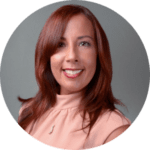
As we move into a new year, I like to reflect on some of the marketing lessons learned from the past 12 months. Sometimes the shifts we see in consumer behavior, marketing technology, and strategies are so huge they can almost knock us over, like the preference for virtual over in-person experiences and shopping seen in the last couple of years. Other times, they happen so gradually that you might almost miss them, like how video marketing has risen in popularity, with short-form slowly overtaking long-form in recent months. By keeping tabs on these things and identifying the marketing lessons learned, we can adapt our strategies.
On this page, I’ll review some of the biggest marketing lessons learned in last year to help you prepare for the road ahead and get more return on marketing investment (ROMI).
1. Brands Must Stand for Something
It’s not enough to offer great products or services. Consumers care about the values behind the brands they select. Eight in ten say they want a brand’s values to match their own, according to Consumer Goods research. About one-fourth will part ways temporarily with their favorite brand if there’s a disparity, and more than one-third will permanently boycott the brand if they’re not in alignment.
Whereas brands would once shy away from potential controversy to avoid alienating consumers, forward-thinking brands are vocal about their stance on key issues to build stronger relationships with key demographics.
For example, the Wendy’s mascot donned gray locks in Canada for a period of time, Yahoo reports. The makeover came on the heels of Canadian TV journalist Lisa LaFlamme’s termination from CTV National News, a decision that sparked national outrage over claims the network let her go due to her gray hair.
Many businesses jumped in to support Ukraine as well. Grammarly was part of the deluge of businesses that donned the Ukrainian flag on social media. The company also researched and published a list of aid organizations for people who wanted to support the cause, then donated over $5 million. Upwork took a similar approach and donated $1 million, then made it easier for users to support Ukrainian freelancers and hire them. Additionally, the platform suspended all business operations in Russia and Belarus.
2. Content Remains King
People have been saying “content is king” for ages, yet the importance of creating impactful content continues to grow. More than 70 percent of B2B marketers say content is more important than it was last year, per the Content Marketing Institute. A full 99 percent report having at least some success with content marketing, and half are increasing their budgets this coming year.
Businesses finding the most success with content marketing set themselves apart in a number of ways. For example, 64 percent of the most successful organizations have a documented content marketing strategy, compared to 19 percent of the least successful. Less than half of the organizations struggling to find success use tools like content calendars and workflow/ collaboration tools, compared to 76 percent of those getting results. The top performers are also far more likely to have the right technology to support their efforts, measure content performance accurately, and provide customers with a consistent experience across their journey.
Interactive Content Deserves a Place in Content Strategies
Brands are developing a greater awareness of the need for interactive content. This includes things like:
- Surveys and Polls
- Quizzes
- Calculators
- Contests and Giveaways
- Augmented Reality
- 360° Videos and Walkthroughs
Simply put, interactive content is more engaging, so it keeps people on pages and posts longer, plus it gets shared more, all of which boosts SEO. It carries prospects through the sales funnel too. Yet, as more businesses strengthen their strategies by mapping out customer journeys and building out content to suit, they’re discovering additional benefits.
Interactive content requires clicks, so it’s much easier to tell when people are engaging with content on a deeper level. This lends itself well to better lead scoring and simplifies the lead qualification process, so sales teams can work more efficiently and effectively. Furthermore, the data gathered allows organizations to identify customer personas that can be used to create more personalized content and boost ROMI.
3. Consistent Messaging and Positioning Are Essential
The phrases “messaging” and “positioning” are often used interchangeably, but they mean different things.
- Positioning is what sets you apart from your competitors. This could be something like quality, affordability, or value. It should speak to the needs of your customers, address their pain points, and relate to how they measure success.
- Messaging refers to how you communicate your positioning to customers.
Consistent messaging is linked to everything from increased sales to improved customer loyalty. It creates credibility and builds trust. Although the messaging may change from one persona to the next, each person should see consistent messaging throughout their customer journey. Remember, customer journey mapping and personas are deeply tied to the success of content marketing.
Netflix offers a prime example of why this is important. In the company’s early days, it used the tagline “The best way to rent DVDs.” As streaming gained popularity and the company model shifted, the messaging switched to “Movie enjoyment made easy.” This was a subtle, sensible adjustment.
The company ran with it, pioneering technology that made it easy for people to discover new programs they like and personalize their experiences. Netflix’s growth exploded. Starting with around 35 million subscribers in 2013 and leaping to hundreds of millions over the recent years, per Statista, it seemed the company was unstoppable.
But, as anyone who follows entertainment news or subscribes to the service knows, the price increases seemed unstoppable too. Whereas plans once started at $8 per month, consistent hikes have more than doubled the cost. Frustrated customers fled the service en masse throughout last year, resulting in a loss of around one million subscribers.
In an attempt to stop the hemorrhage, the brand launched a low-cost ad-supported tier. This seemed to resuscitate the service to some degree, but subscribers quickly learned they were missing many of their favorite shows – up to 10 percent, as Variety reports.
While the future of Netflix remains to be seen, we can learn a lot from the company’s recent stumbles. First, their positioning isn’t strong. There’s fierce competition in the streaming industry now. Most competitors use sophisticated algorithms to tailor the viewing experience, and many are comparably priced or cheaper. Secondly, between the price increases and loss of programming, the brand is not holding true to its “Movie enjoyment made easy” messaging, and customers are revolting.
Brands that do well going forward will develop a strong position and messaging, then build on it to create consistency throughout the customer journey, including after conversion.
4. Savvy Brands Connect Through Community Marketing
Community marketing involves creating a space where your customers can come together. It’s for their benefit, but the business benefits too. Overall, 68 percent of businesses say their community marketing efforts boost customer loyalty and retention, per the State of Community Management report. A further 60 percent say their community boosts awareness and branding, and 45 percent say it increases product usage. Previous reports show that community marketing tactics generate an average ROI of 6,469 percent too.
On a basic level, businesses can easily create a community space for their customers with Facebook Groups or LinkedIn. These have the added benefit of word-of-mouth marketing because their friends and associates see them engage with you. There is a multitude of platforms designed specifically for community management as well.
For example, LEGO has its own community called LEGO Ideas. It’s loaded with user-submitted images of their own designs. There are also building contests where community members can enter and vote to help choose a winner. Even if you’re not a fan of the brand or products, you can probably still appreciate that their 90th-anniversary contest received over 75,000 submissions in less than a week.
This type of engagement keeps people close to a brand and enthusiastic about it, and you don’t have to have a physical product to benefit. If you’re a professional service provider, for example, you could create a business community for your clients. Maybe you’ll use it to help them network or provide them with tips. Many businesses, especially tech companies, have communities where users help each other troubleshoot or experiment with new ways to use the product.
5. To Master Digital Experiences, We Need to Be Able to Adapt to Change

As the saying goes, “The only constant is change.” In the last couple of years, we saw massive shifts in how much time people spend online and how they engage. And, some of the biggest changes relate to data and privacy.
The Downfall of Cookies in Browsers Forces Marketers to Change Strategies
Whether you’re directly involved in marketing or not, you’re probably familiar with cookies. These little files of information are generated by web servers when you land on a website and are stored in your browser.
Cookies can be helpful for the user. For example, first-party cookies, or those added by a single website and only used by that website, usually improve the experience. They’re how some websites remember what you’ve added to a shopping cart even if you’re not logged in or automatically direct you to a login page when you’ve visited a website before. There’s no sign this type of cookie is going anywhere.
Third-party cookies, however, are sunsetting. These cookies track you from one website to another. This can be helpful to a user sometimes too. For example, it can streamline purchases when your virtual payment tool remembers who you are and doesn’t make you jump through 100 hoops to complete a purchase. In marketing, third-party cookies are used to better understand website visitors and customers. This can help you develop personas, create materials that resonate with your audience, and more. This also benefits the customer because you can address their concerns better and personalize their experience. Lastly, cookies are a big part of tracking conversions.
With that said, not all third-party cookies are good. Some are hitchhikers that attach themselves after you’ve viewed an ad or without you knowing. Some companies specialize in this and aggregate the data, then sell it. Others use cookies to identify how you vote and load you down with ads that sway your opinion. The list goes on. It’s because of this that third-party cookies are largely vanishing. Many major browsers have already nixed them. Apple recently rolled out more robust privacy settings related to apps tracking visitors. Google plans to ditch third-party cookies in the very near future too.
Without having this rich data to create customer profiles and understand users better, brands are increasing their first-party data-gathering techniques. There’s also a movement toward Enhanced Conversions for Web, a conversion tracking feature. It involves sending Google a bit of information, like a customer email address, at the time of conversion. The data is then checked against Google’s hashed data, and a conversion is logged.
Privacy Regulation Changes Impact Paid Advertising
In addition to the mass sunset of cookies, some jurisdictions have strong privacy laws. For example, users in the EU must actively consent to cookies being placed before a website can add them to a browser. Without the data afforded by third-party cookies, it’s nearly impossible to serve ads to targeted audiences. That, no doubt, impacts the effectiveness of ads, which are essential to most modern marketing strategies, and has the potential to kill ad-supported websites.
Right now, Google is developing a Privacy Sandbox that may allow advertisers to display ads while maintaining user privacy. The company is also working on FloC, a technology that works with the data of large groups of people with common interests rather than individuals.
As we move forward, digital marketers must prepare for shifting data availability and tools by implementing and testing workarounds now.
6. Video is the Future
More than 85 percent of businesses include videos in their marketing strategies, according to the State of Video Marketing Survey by Wyzowl. All but one percent plan to continue using video in the future, and 79 percent of those that aren’t presently leveraging it plan to include it going forward.
Video has also been shown to increase engagement dramatically on social media, decrease the cost per engagement, and boost conversions.
Short-Form Videos Are the Hottest Trend
Perhaps courtesy of TikTok, short-form videos now have homes in Instagram Reels, YouTube Shorts, and Facebook Stories, and are also popular on platforms like Pinterest and LinkedIn. Short-form videos have the highest ROI of any social media marketing strategy, according to HubSpot, and more than half of all marketers who use it plan to increase their investment going forward. If you’re planning to cash in on this trend, aim for videos between 31 and 60 seconds.
7. Metaverse Marketing is Dawning
The metaverse is so new that people can’t even agree on an exact definition of what it is or what it will become. This is not unlike the early stages of the internet, trying to explain seemingly abstract concepts like how websites hold limitless potential and that anyone can access information at any time. Only now, it’s interconnected immersive environments powered by a virtual economy that leverages cryptocurrency.
Brands are already cashing in. Nike stepped into the space this year with the release of Cryptokicks. However, the company never “sold” the virtual sneakers. Rather, anyone with a Clone-X (3D character designed for metaverse interaction) was airdropped box-shaped NFT called a Mnlth (pronounced “Monolith”) at no charge. Nike didn’t reveal what the purpose of the box was at the time. Only months later did those who held onto their Mnlths learn they could burn them and get their very own pair of Cryptokicks—Nike’s first virtual sneaker. The resale value of Cryptokicks has now reportedly climbed over six figures.
Gucci is another example. The brand built Gucci Garden inside Roblox, a virtual world game that’s popular with Gen Z and Gen Alpha (most users are under age 16). It stashed a variety of Gucci products throughout the space. For two weeks, visitors to Gucci Garden could find anything from hats to sunglasses and handbags. Some were free, while others cost roughly $1.20 to $9.00, as converted into Robux, the game’s virtual currency. The Dionysus bag was among the items on offer and originally sold for around $4.75. Novelty and scarcity of it drove the resale price to more than $4,100, AP News reports.
Other brands have jumped into Roblox too. Hyundai, for example, built the “Hyundai Mobility Adventure” game inside the platform, while Forever 21 offers a beanie for just under $1 that avatars can wear.
There’s no telling exactly what the future of the metaverse holds, but we do know that the brands engaging in metaverse marketing today are gaining a competitive advantage and shaping it for those who follow.
8. Automation is Essential to Staying Competitive
Automation is often prized for boosting efficiency. That’s important to maximize ROMI. However, marketing automation can also improve digital marketing results by increasing conversions through drip and nurturing campaigns as well as through A/B testing, personalization, and optimization. Automation tools can also handle lead qualification, so sales teams can focus on those most likely to convert.
While these things used to be out of reach for many small and midsize businesses, most modern CRM options offer these capabilities, especially if they’re paired with a marketing suite.
9. Selectivity > Do it All
Nobody can do it all and be effective. Some marketing strategies, channels, and mediums are going to be more effective than others. Which ones are best will vary based on the brand and other factors. Marketers should always be experimenting with new ideas to see what works, but as you discover what successful marketing looks like for your business, gravitate to that to maximize ROMI.
Beauty brand Elizabeth Arden, for example, paused its Pinterest marketing, Retail Dive reports. Whereas an Instagram post from the company might receive hundreds of likes, its Promoted Pins received only a couple. The cosmetics company Lush faced similar issues. It dropped Instagram, Facebook, TikTok, and Snapchat, shifting its focus to podcasts.
Countless brands are leaving Twitter, including General Motors, Eli Lilly, Audi, and United Airlines, per Essence. Their departures come on the heels of a mass celebrity exodus from the platform over moderation concerns and hate speech increases. While there’s little benefit to investing in a platform that your customers aren’t leveraging, their vocal departures go hand-in-hand with the first point: brands must stand for something.
Get Help Strengthening Your Digital Marketing This Year and Beyond
I’ve watched the face of digital marketing change over the years, essentially since its inception. I’ve served as an educator for Google Partners, helped Fortune 100 companies level up, and guided both small and midsized businesses toward their unique targets. While I follow a proven recipe for digital marketing success, I also stay on top of the trends to ensure the brands I support receive maximum ROMI. If you’ve got big goals for the upcoming year but aren’t sure how to reach them or want assistance setting your team up for success, I can help. Contact me for a complimentary consultation.


































































